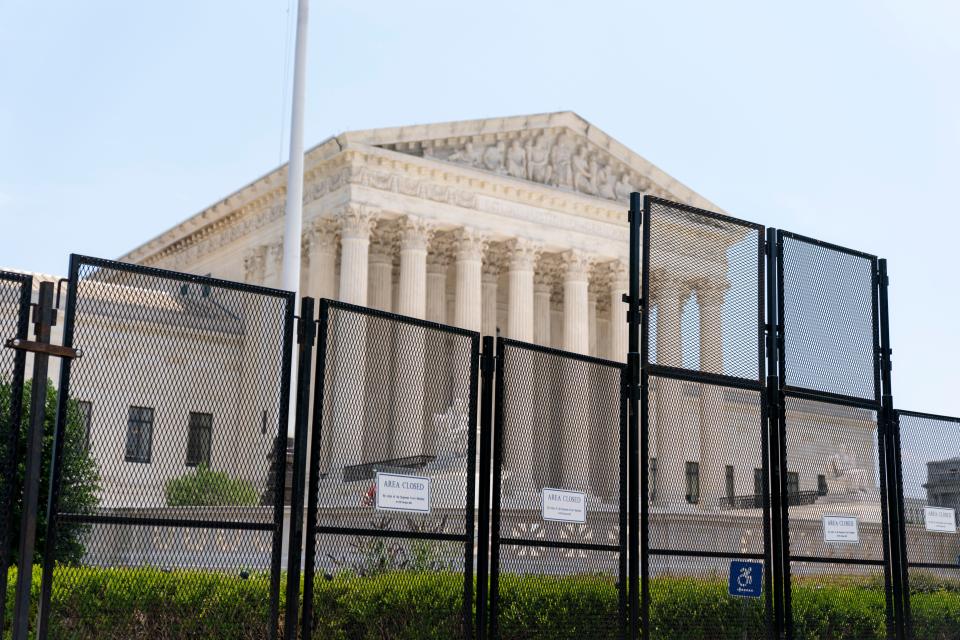It's time to discuss expanding the Supreme Court – at a minimum
The Supreme Court is making things frightening for people of color; it’s time to discuss expansion.
That’s at a minimum. It’s also time to discuss splitting California, granting statehood to U.S. territories, scrapping the Electoral College and dropping the filibuster.
If the high court is political, these measures might be the only ways to stop the nation from being overrun by conservative ideologues, including the ones in black robes.
The conservative record adds up against us
“Conservative” shouldn’t be synonymous with “racist.”
I’ve believed for years that most every household in the nation is, at some point, conservative. Who could disagree with a desire to protect their home and the people in it, if necessary, with force? Or the budgetary stance that credit should be used sparingly because it’s bad to spend money before it’s been earned?
But the cumulative effect of Republican positions creates a perception that the overwhelming majority of conservatives are either comfortable with racism or unabashed bigots.
The impact: Supreme Court's reversal of Roe will be felt most by Latinas
It’s conservatives who are distorting a debate over history education in public schools into a poorly understood boogeyman called “critical race theory.” It was a conservative administration that separated families and put kids in cages at the U.S.-Mexico border. And it’s been conservatives seeking to discredit a legitimate presidential election while making it harder for minorities to vote.
As long as these realities hold true, conservatives will face skepticism from people of color, which increasingly means a cynical view of the high court.
Recent Supreme Court decisions can't be coincidence

Recent decisions show a Supreme Court aligned with conservative politics in a way that can’t be mere coincidence. Sometimes the justices favor states’ rights. Sometimes they lean toward federal authority. But they always seem to follow conservative talking points.
It leaves the impression that the law is subordinate to their inconsistent and preconceived interpretations. This type of subjectivity tends to precede, promote and preserve institutional racism.
Subjectivity in policing means white mass shooters get arrested, but African American drivers get killed. Subjectivity in immigration means “give me your tired, your poor, your huddled masses” – unless they come from Central America. And subjectivity in criminal justice means that Black and Latino people account for about 70% of the U.S. prison population when they comprise only about a third of the nation.
Objective interpretation of the law all the way back to all “are created equal” is often the only cover people of color have against oppression.
There’s room for subjectivity in government, but not the Supreme Court.
Expand the court to offset its politicization
The 6-3 court, with a majority of justices seated under conservative presidents, including three by Donald Trump, has put abortion law in the hands of state legislators and limited tribal sovereignty. The justices also weakened federal authority on vaccine mandates and climate change.
This makes sense if the court favors an interpretation of the 10th Amendment that gives states broad power – but the court went against that doctrine in a gun case out of New York.
The Supreme Court has to be above politicization or else we risk losing faith in the entire system.
To offset this, Democrats might need to get radical, even if they pull off the rare trick of increasing their margins in November’s midterm elections.
Since Supreme Court justices have lifetime appointments and members of the Trump trio (Brett Kavanaugh, Neil Gorsuch and Amy Coney Barrett) are in their 50s, the only sure way to adjust the conservative imbalance would be for Congress to increase the number of justices and for a left-leaning president to pack the nominations with liberals and moderates.
If the court were to go from nine justices to 13, center-left justices could take a 7-6 edge.
That's just the first step. We must do more
But the strategy could neither start nor stop there.
Breaking the filibuster could be the first step. Democrats don’t have enough of a Senate majority to do much, otherwise.
This would require Sens. Kyrsten Sinema and Joe Manchin rethinking long-held positions on maintaining the filibuster process or recruiting moderate or retiring Republicans who see the danger inherent in absolute political power concentrated on one side of the spectrum.
Then, to ensure that conservatives wouldn’t try to leverage the same tricks when they have the opportunity, Democrats could split California in two and grant statehood to U.S. territories including Puerto Rico and American Samoa. This would increase the Senate seats from the Golden State from two to four and create an advantage from voters of color in the territories.
To cement the edge, Democrats could do away with the Electoral College, without which Republicans would have a hard time reaching the White House. Conservative candidates have won the popular vote only once since 1988.
Justices must interpret the law, not spin it
Sounds extreme? Do extreme times call for extreme measures?
Right now, it seems that we have ideologues in black robes making things frightening for people of color.
The Supreme Court must be above politics. Justices have to be trusted to interpret the law, not spin it.
There’s room for subjectivity in government, just not in the Supreme Court.
Reach Moore at gmoore@azcentral.com or 602-444-2236. Follow him on Instagram and Twitter @SayingMoore.
There's plenty Moore where this came from. Subscribe for videos, columns, opinions and analysis from The Arizona Republic’s award-winning team.
This article originally appeared on Arizona Republic: Supreme Court is packed with ideologues. Time to expand it

